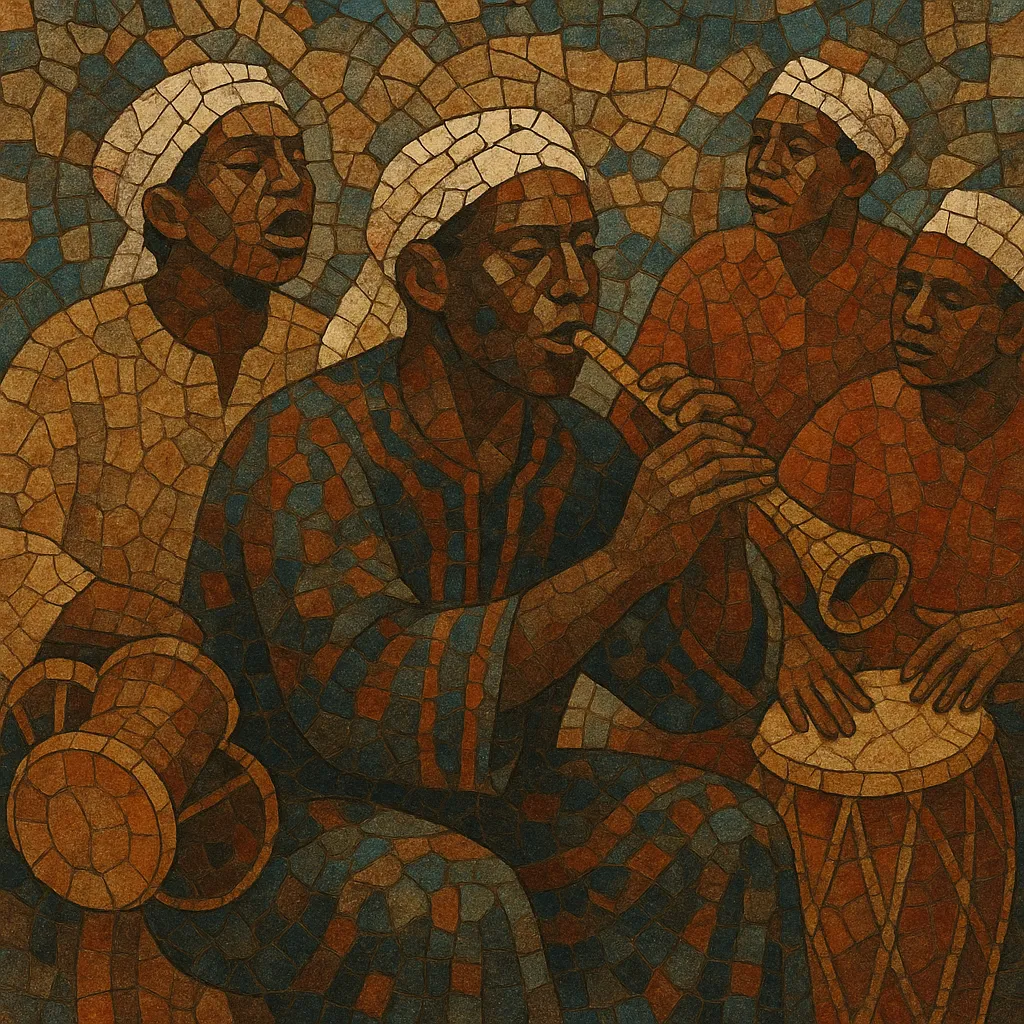Liwa is a communal Afro‑Arab Gulf music and dance tradition rooted in the African diaspora that came to the Arabian Peninsula through Indian Ocean trade. It is most closely associated with coastal Oman and the present‑day United Arab Emirates, where it is performed at weddings, festivals, and community celebrations.
Musically, Liwa centers on powerful interlocking drum patterns in a lively compound meter (often felt in 6/8) that drive a circle dance led by a piercing double‑reed oboe (locally called mizmar/surnāy). Call‑and‑response vocals alternate between a lead singer and the chorus, with lyrics drawing on Arabic and Swahili phrases that reflect centuries of exchange across the Gulf and East Africa.
The sound is earthy, percussive, and intensely rhythmic, with layered hand and barrel drums (e.g., rahmani, kasir, mirwās) and sometimes a clay pot (jahlah) supporting the oboe’s melodic improvisations. The result is an ecstatic, communal performance that embodies seafaring histories, migration, and shared cultural memory.
Liwa emerged from East African musical and dance practices brought across the Indian Ocean by sailors, traders, and communities connected to Oman and the Gulf, especially through ties with Zanzibar and the Swahili Coast. By the 19th century, these rhythms, languages, and instruments had taken root in port cities of Oman and the Trucial Coast (today’s UAE).
As maritime trade and migration intensified in the 1800s, Liwa became a fixture of coastal life. Omani and Emirati communities adapted East African circle‑dance structures to local aesthetics, retaining call‑and‑response singing and polyrhythmic drumming while foregrounding the mizmar (surnāy) oboe. The performance contexts—weddings, holidays, and communal gatherings—reinforced Liwa’s role as a social glue and a marker of Afro‑Arab heritage.
In the 20th and 21st centuries, Liwa has been maintained by community troupes and heritage organizations in Oman and the UAE, and is also known in Bahrain, Kuwait, and Qatar. While largely preservational in focus, Liwa’s rhythmic language has influenced broader Khaleeji popular styles and stage presentations at folklore festivals. Today it remains a living tradition—both a performance and a collective memory of Indian Ocean connections.


